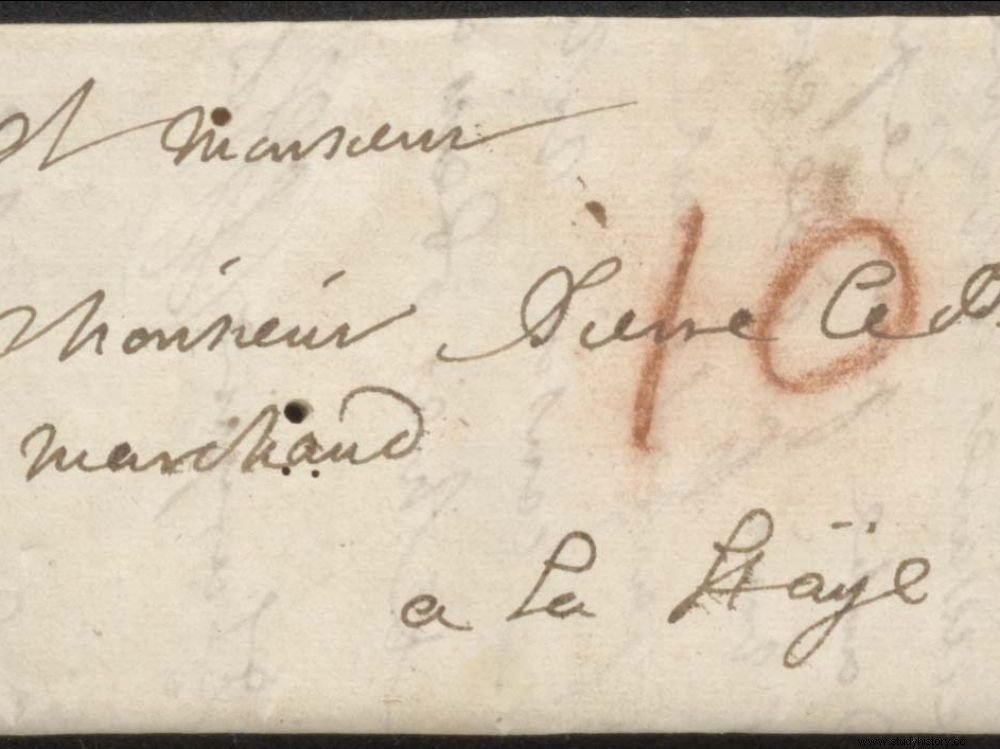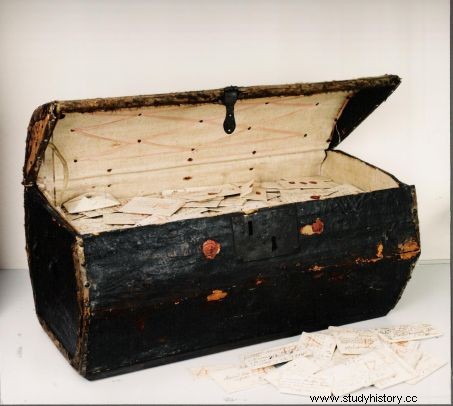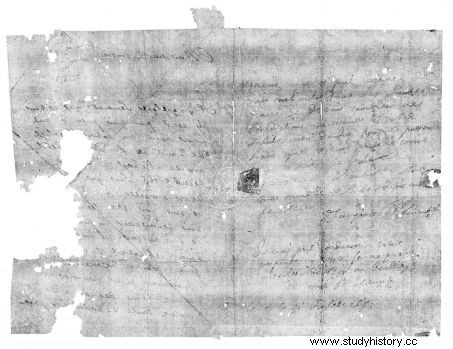Long before envelopes, letters were secured by clever folds that are today undone by technology.

One of the letters in Brienne's collection dating from 1697.
Securing communications is a very current problem, but not only. Ensuring the confidentiality of messages has always been an important issue. Thus, around 300 years ago, to ensure the secrecy of their correspondence, letter writers skilfully folded their letters then sealed them with wax:the envelopes became popular much later, around 1830. Many Missives still sealed dating from this period have been found but there is no way to read them without damaging them, sometimes with a scalpel. However, researchers from MIT and the University of Cambridge have just found a technological solution to unfold them virtually and unlock their little secrets.
Physical cryptography
The Brienne collection brings together the contents of a trunk belonging to Simon de Brienne, a Dutch postmaster in charge of distributing mail from Europe throughout the Netherlands. It contains undelivered letters dating from 1680 to 1706 and was removed from the collections of the Postal Museum in The Hague. At the time, stamps did not exist and the postman was paid, when he delivered the missives safely, by the person who received them. But sometimes, often even, the addresses were incomplete or lacked precision, so that delivery proved impossible. These letters were then kept because they represented a potential pecuniary value if ever someone were to claim them. In Brienne's trunk, the scientists found 3,148 objects including 2,571 open letters, fragments of correspondence and other documents as well as 577 packets of letters that have never been opened. Until now, these packets of letters could only be studied and read by cutting them and thus damaging them.

Brienne's Chest. Credit:Unlocking History Research Group .
The authors of the study, published in the journal Nature Communications , first conducted an extensive review of the different folding techniques by analyzing some 250,000 letters. They demonstrate that folding truly constitutes a form of physical cryptography since opening them irreversibly damages them, thereby notifying the recipient that they have been read. Dozens of folding techniques have been identified which have made it possible to establish "safety scores". However, they are almost all based on previously opened documents.
Virtual opening of letters
Securing communications is a very current problem, but not only. Ensuring the confidentiality of messages has always been an important issue. Thus, around 300 years ago, to ensure the secrecy of their correspondence, letter writers skilfully folded their letters then sealed them with wax:the envelopes became popular much later, around 1830. Many Missives still sealed dating from this period have been found but there is no way to read them without damaging them, sometimes with a scalpel. However, researchers from MIT and the University of Cambridge have just found a technological solution to unfold them virtually and unlock their little secrets.
Physical cryptography
The Brienne collection brings together the contents of a trunk belonging to Simon de Brienne, a Dutch postmaster in charge of distributing mail from Europe throughout the Netherlands. It contains undelivered letters dating from 1680 to 1706 and was removed from the collections of the Postal Museum in The Hague. At the time, stamps did not exist and the postman was paid, when he delivered the missives safely, by the person who received them. But sometimes, often even, the addresses were incomplete or lacked precision, so that delivery proved impossible. These letters were then kept because they represented a potential pecuniary value if ever someone were to claim them. In Brienne's trunk, the scientists found 3,148 objects including 2,571 open letters, fragments of correspondence and other documents as well as 577 packets of letters that have never been opened. Until now, these packets of letters could only be studied and read by cutting them and thus damaging them.

Brienne's Chest. Credit:Unlocking History Research Group .
The authors of the study, published in the journal Nature Communications , first conducted an extensive review of the different folding techniques by analyzing some 250,000 letters. They demonstrate that folding truly constitutes a form of physical cryptography since opening them irreversibly damages them, thereby notifying the recipient that they have been read. Dozens of folding techniques have been identified which have made it possible to establish "safety scores". However, they are almost all based on previously opened documents.
Virtual opening of letters
To refine their scores, the researchers therefore worked on the bundles of closed letters in the trunk and they tried to unfold them virtually, with success. To do this, they first digitized them by time-integrated, high-contrast X-ray microtomography (XMT) and then reproduced them by 3D reconstruction. They then used an algorithm developed during their work to open them. The software manages to identify and separate the different layers of the folded letter. It also allows to visualize the folding patterns and to recreate the locking process step by step, which then allows virtual unfolding as on the video below.
The content of the letters, many of which are written in French, because they come from this country, can also be guessed and interpreted because the inks used generate a different contrast from that of the paper. Thus document DB-1627 (which is presented closed in the main image) could be read for the first time since it was sealed:it is a request from a certain Jacques Sennacques, dated July 31 1697, addressed to his cousin Pierre Le Pers, a French merchant established in The Hague, for a certified copy of a notice of death of one Daniel Le Pers. The latter never arrived at its addressee and no doubt that the case, which probably concerned an inheritance problem, could not be settled! In the rest of the letter, Sennacques asks for news of his family and commends his cousin to the grace of God.

The DB-1627 letter virtually unfolded. Credit:Unlocking History Research Group .
The method was successfully applied to four letters in all, but the researchers point out that there are tens of thousands of unopened letters in museums and that their technique could provide access to a large number of them. And even those that have been coerced with more traumatic methods can still reveal things about how they were bent and therefore about the importance placed on epistolary safety in different places and times.
